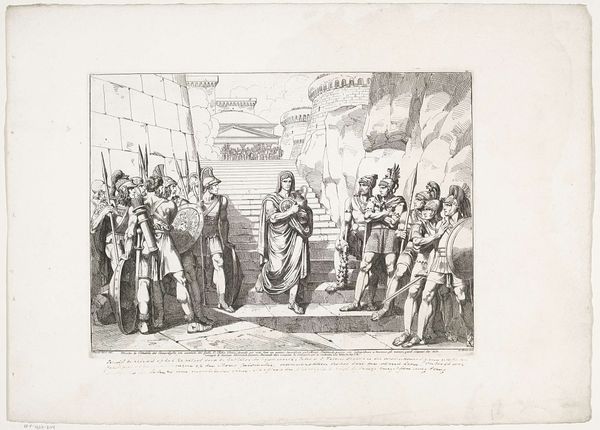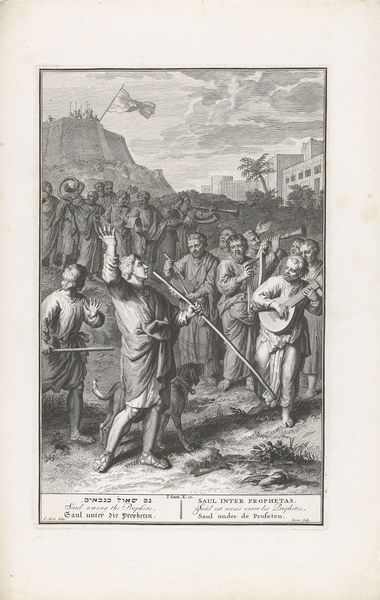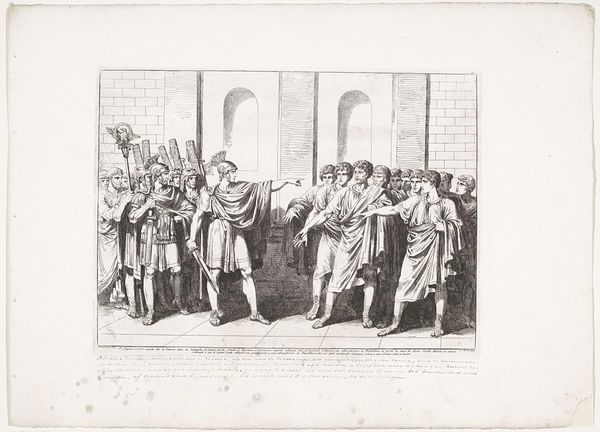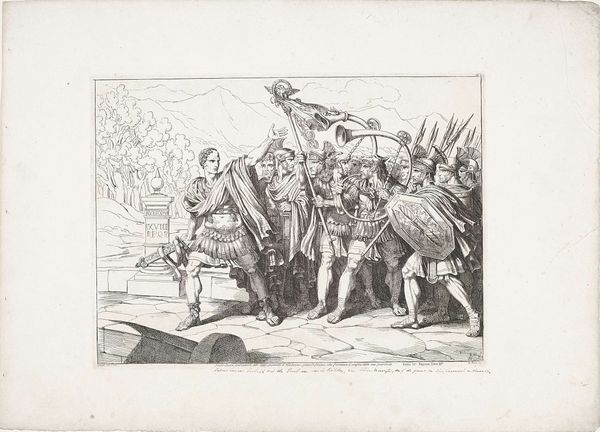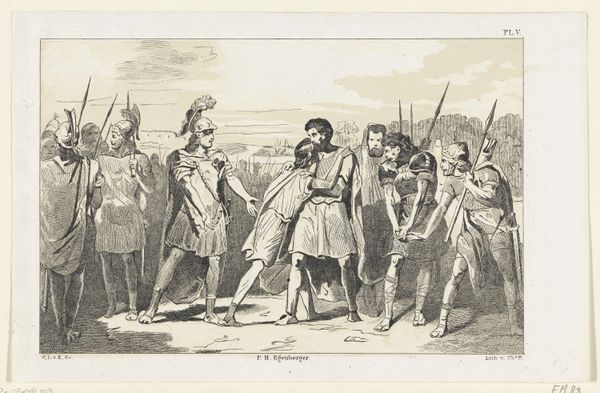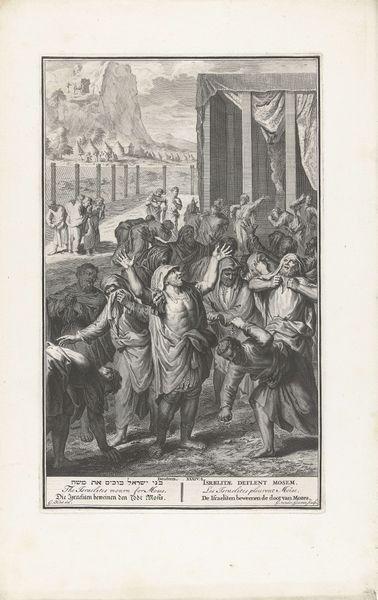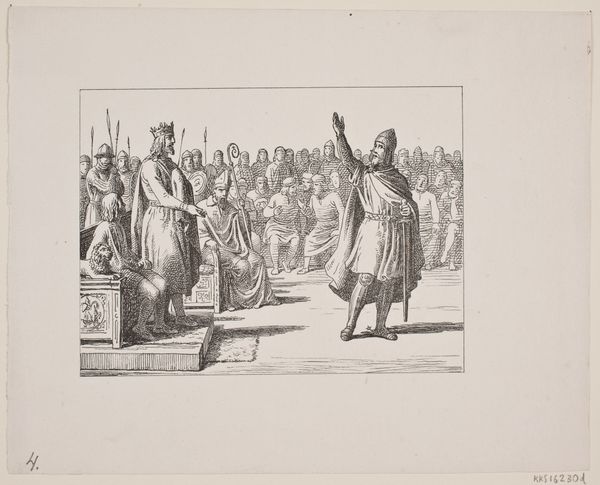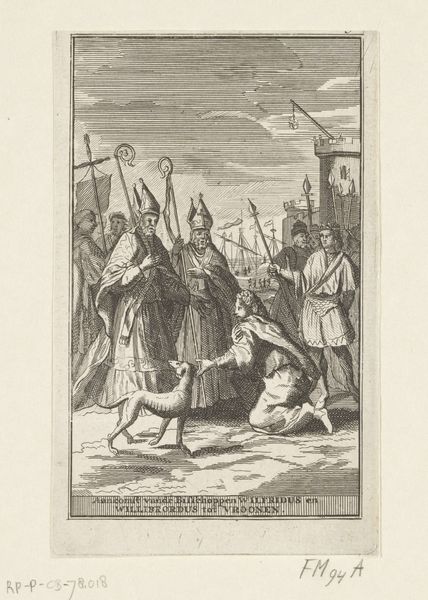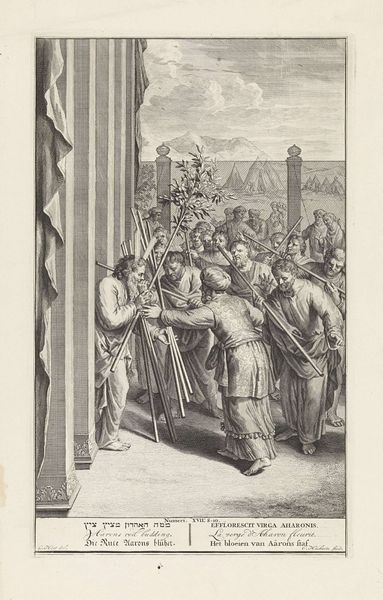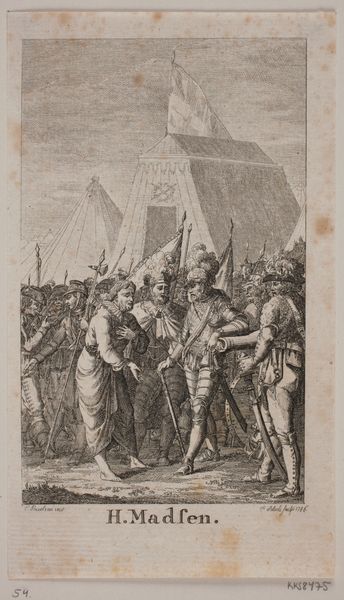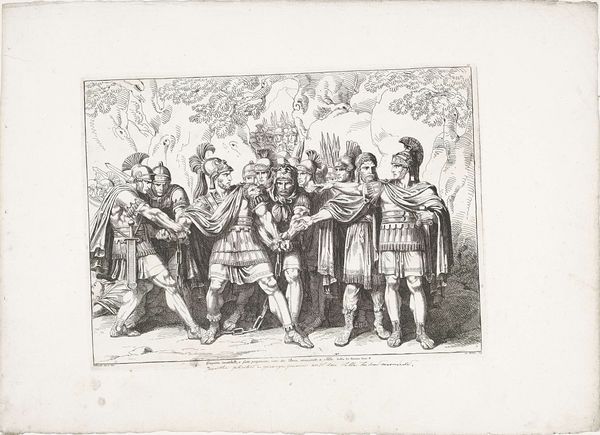
print, etching
#
neoclacissism
#
narrative-art
# print
#
etching
#
classical-realism
#
figuration
#
history-painting
#
academic-art
Dimensions: height 314 mm, width 423 mm
Copyright: Rijks Museum: Open Domain
Bartolomeo Pinelli made this print of Gaius Popillius Laenas and Antiochus, using etching, sometime before 1835. Etching is an intaglio printmaking technique, meaning the lines are incised into a metal plate, and then filled with ink to make the image. Here, the etcher would have applied a waxy ground to the plate, then scratched away lines with a needle to expose the metal. The plate was then submerged in acid, which bit into the exposed lines, creating grooves. The depth and width of these grooves, and the amount of time spent drawing them, determines the thickness and darkness of the lines that define the composition. The finished plate would have been inked, wiped clean, and then pressed against paper, transferring the image. This process could be repeated many times, resulting in a series of identical prints. Etching was a particularly important technique because it allowed artists to create multiples, expanding the audience for their work. It also brings into question the status of printmaking as ‘high’ or ‘low’ art.
Comments
No comments
Be the first to comment and join the conversation on the ultimate creative platform.
